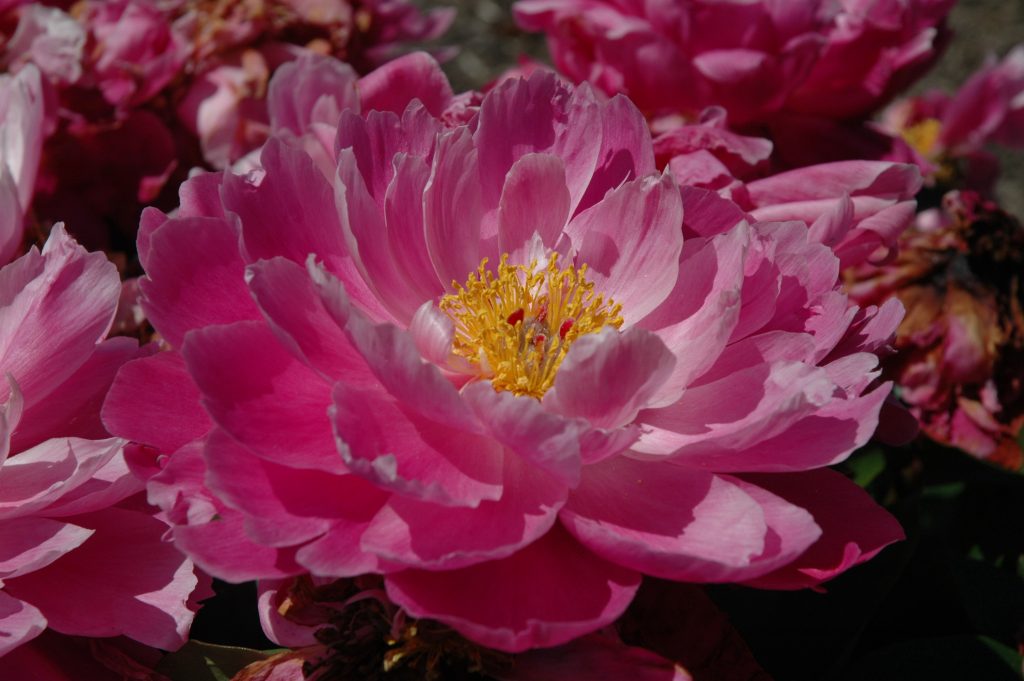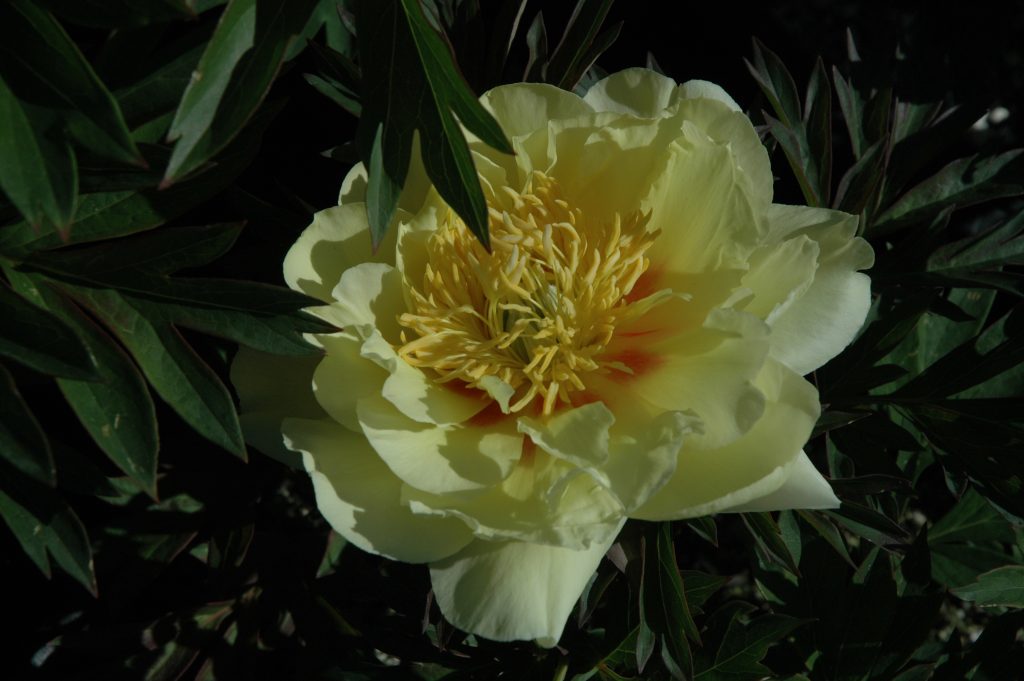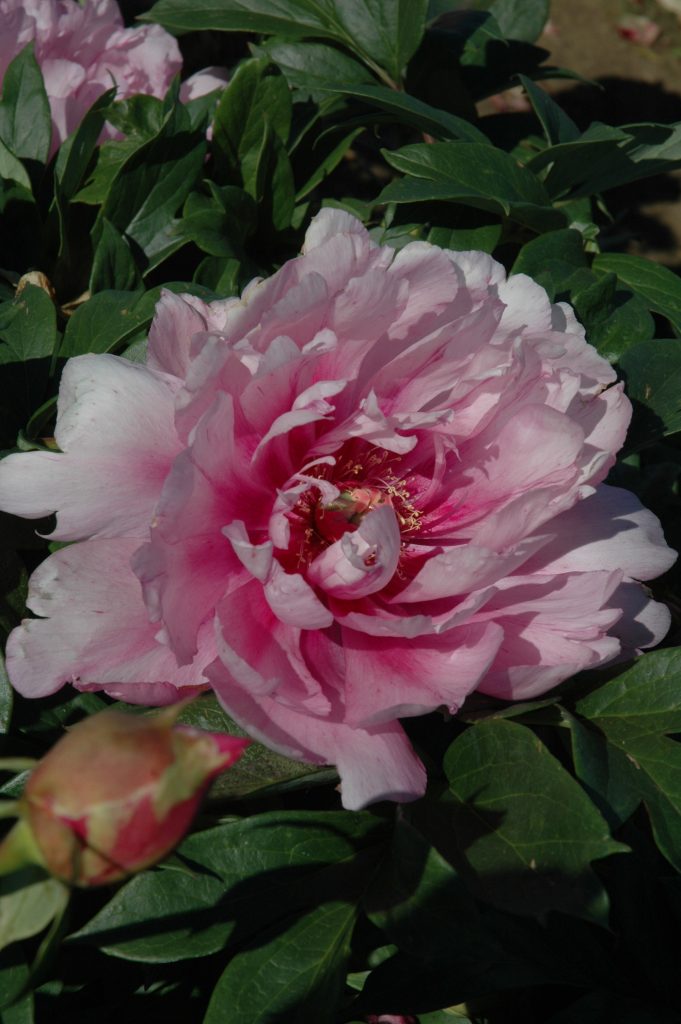
Is there a more perfect garden plant than the peony? The flowers are beautiful, sumptuous and often fragrant. The plants are hardy, live for decades with little attention and the foliage is never an embarrassment in the border.
I was made aware of their longevity long ago when, as a child, I found an overgrown garden in Lingfield where the only plants that had survived the dereliction and were winning the battle with the nettles were peonies and double orange day lilies.
Now, to counter any criticism that I am viewing them through rose-tinted spectacles, I accept that peonies are not in bloom for long. The large, double flowers can shatter in wind and in rain they can be heavy for the stems and the singles, which I tend to prefer, can be in full beauty for a matter of days. But most herbaceous, Chinese peonies (P. lactiflora hybrids) have several buds per stems so a clump will be a thing of beauty for several weeks, not counting the weeks of anticipation before!
But flowers are not everything and the red, new shoots are a thing of beauty from the moment they pop through the soil in spring and the leaves are nice enough in summer before they frequently develop good autumn colour.
What I have come to value in my new garden, where I am discovering the problems with soil and late spring frosts, is that peonies are very forgiving. Some plants have given up the ghost what with soggy soil in winter and recent frosts snubbing them as they dare to try to grow. But the peonies just keep on growing.
I readily confess that my peony love affair is centred around the Itoh peonies, hybrids between herbaceous peonies and tree peonies. They are vigorous, flower for longer, have astonishing flowers and are just perfect. They are not cheap; I have paid £50 for some but, considering that an established plant can have 30 or more flowers and will live for half a century it is an investment – or that is what I tell myself. Fortunately, one of the best is also the most affordable and I would rate Peony ‘Bartzella’ (below) among my top ten garden plants.

Peony top tips
Peonies prefer well-drained, rich soil. They will be in the garden for decades so prepare the soil well, digging in well-rotted compost.
Peonies flower best when in full sun BUT the flowers will last longer if they are in part shade.
Feed your peonies. A dressing of general fertiliser or, even better, a rose fertiliser, in spring, will keep your peonies flourishing.
Peonies CAN be moved and large clumps can, with some significant effort, be lifted and divided. With care the plants will continue to flowers as though nothing happened. Peonies are best moved in October or February/March. Do not move them in growth. When replanting it is essential to put them at the same level in the soil.
Peonies CAN be grown in pots but it is not ideal. They are heavy feeders and have large, thick roots. If you want to try, use John Innes No 3 compost but, to be honest, petunias would be easier to look after.
You can plant them as bare root plants in winter or you can buy them in bud or bloom. Make sure you keep them watered through summer if planting now.

Peony problems
Peonies are not difficult to grow but you may encounter these problems.
No flowers
There are two main reasons for lack of flowers;
Deep planting will cause the plants to make lots of stems but with no flowers. The crown of the plants – where the shoots emerge from the top of the roots – should be 1 inch (2.5cm) below the soil level. If planting now in pots, dig around in the top of the pot to see where the crown is and adjust your planting to accommodate this.
Peonies live for years and sometimes shrubs grow around them and shade the plants which were originally in sun. Deep shade will not kill the peonies but will reduce flowering.
Peony blight is a fungal disease that kills peony buds. It is worse in wet seasons. The buds get to the size of peas and then turn black and die. You can spray with a fungicide as soon as you see buds if your plants have suffered before, otherwise pick off the dead buds to prevent spores spreading.
Ants
Gardeners are frequently worried to see ants crawling over the flower buds. These are not a cause for concern. The buds produce beads of sugar and the ants actively seek these out. Quite why this is so is a mystery but ants are frequently used by plants as scavengers since they will also eat pests and this may be the plants’ way to use ants to clean off pests.
Jobs for the week
Prune spring-flowering shrubs once they have finished flowering.
Deadhead tulips once the petals drop.
Sow salads outside if frost is not forecast
Deadhead violas and pansies and keep feeding once a week to promote growth and flowering.
Sow zinnias in cell trays in the greenhouse